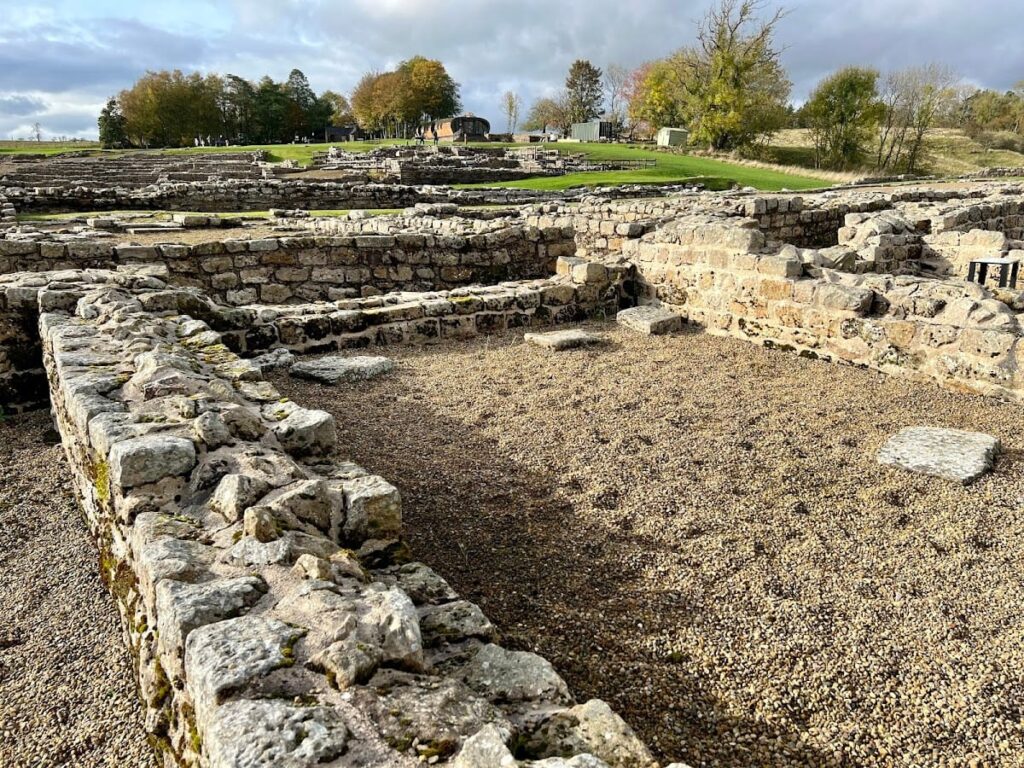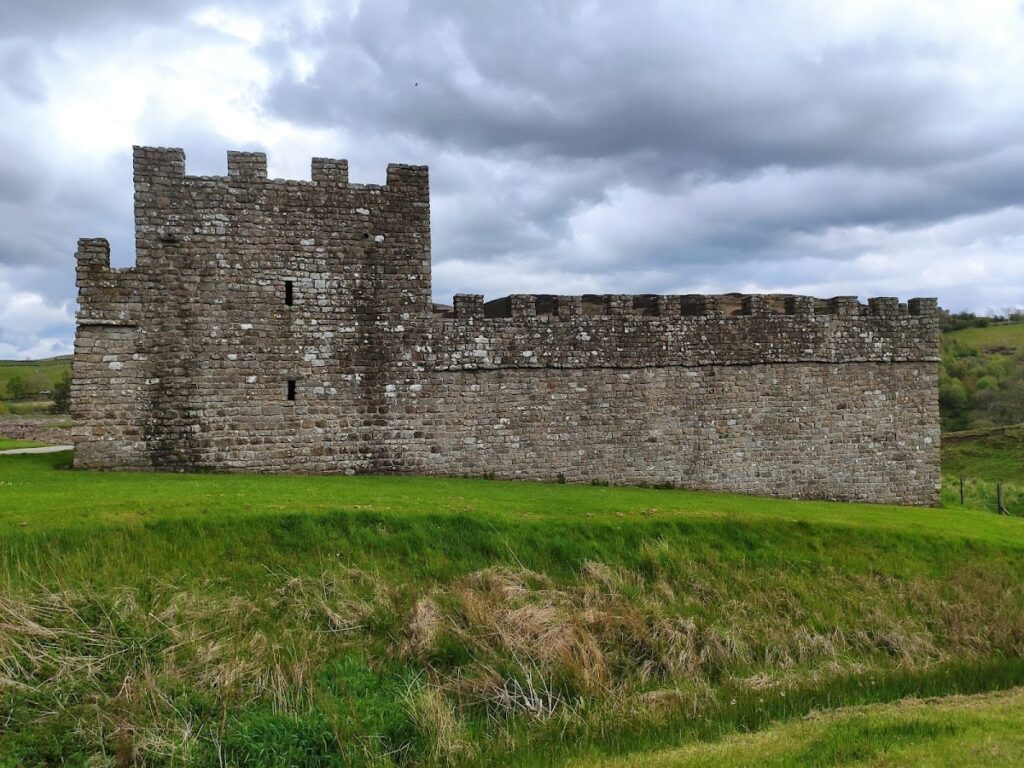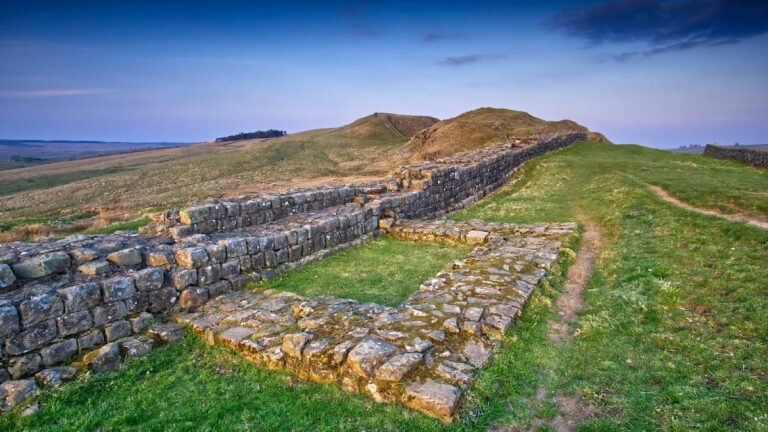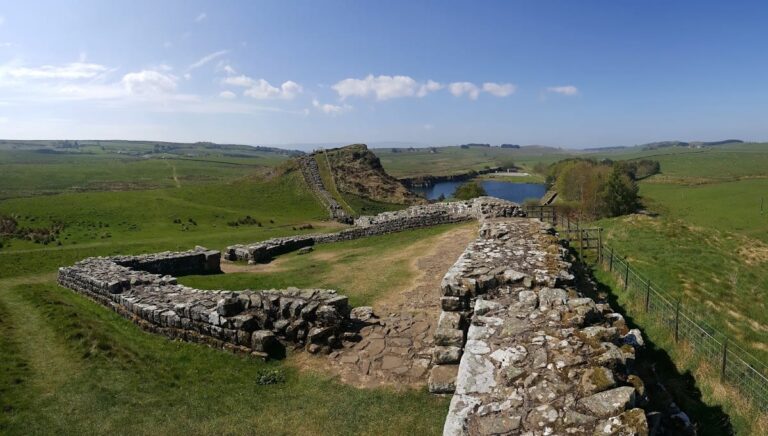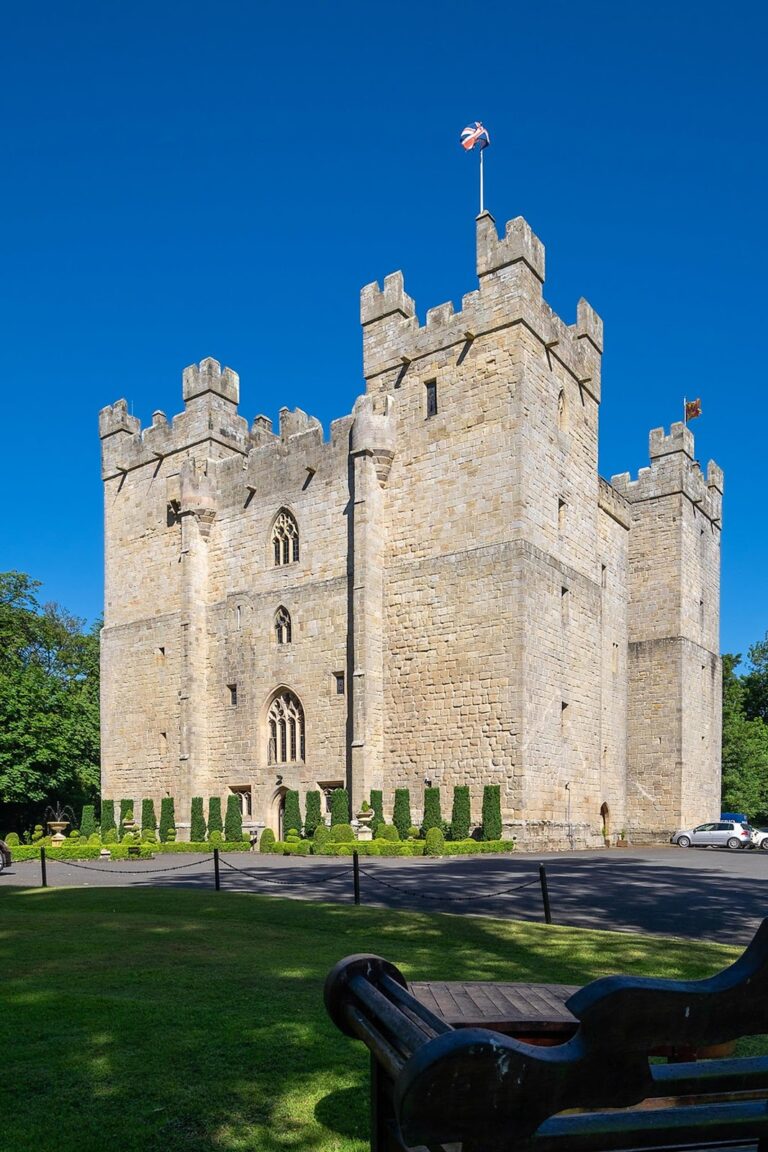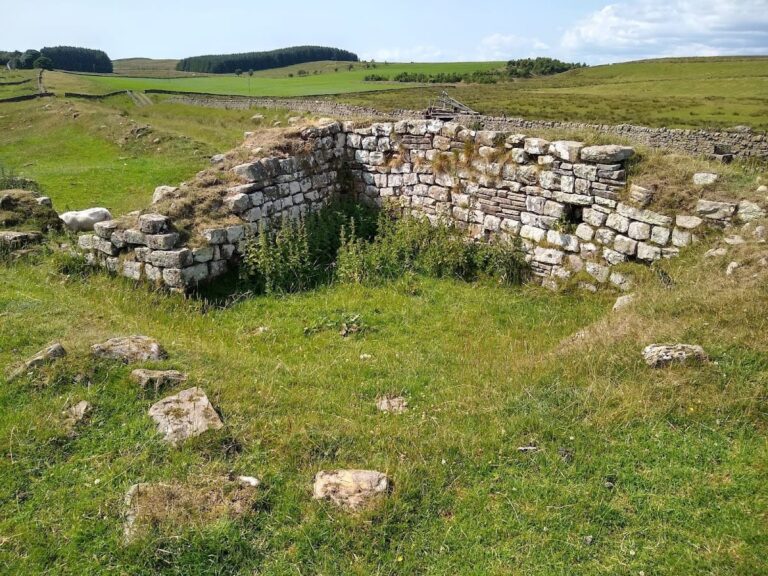Vindolanda: A Roman Auxiliary Fort South of Hadrian’s Wall
Visitor Information
Google Rating: 4.8
Popularity: Medium
Google Maps: View on Google Maps
Official Website: www.vindolanda.com
Country: United Kingdom
Civilization: Roman
Remains: Military
History
Vindolanda is a Roman auxiliary fort located just south of Hadrian’s Wall in northern England, near Hexham. It was established around 85 AD by the Roman Empire to guard the Stanegate, a military road connecting the River Tyne to the Solway Firth. This fort predates Hadrian’s Wall and served as a strategic military base during Rome’s northern campaigns.
The earliest phase of Vindolanda’s occupation began with the Cohors I Tungrorum, a Roman auxiliary unit stationed there after General Agricola’s conquest of northern Britain. In the 90s AD, the Cohors IX Batavorum took over the fort. During this time, the fort underwent several reconstructions.
Between 97 and 105 AD, Vindolanda saw improvements in its layout and facilities, including a large headquarters building. The fort played a role in military operations beyond Britain, such as Trajan’s invasion of Dacia. Around 122 AD, Vindolanda may have functioned as an administrative center during the construction of Hadrian’s Wall, overseeing logistics and troop movements.
In the early 2nd century, the fort expanded westward and became the largest timber fort on the site. This period included the presence of high-ranking officers and possibly Emperor Hadrian himself, suggested by the construction of a ‘palatial building’ with private baths. The fort also housed junior officers and centurions in specialized quarters.
Later in the 2nd century, the fort was rebuilt in stone by the Cohors II Nerviorum. A complex of circular stone huts was added during the Severan period, possibly accommodating irregular troops or civilians. The Cohors IV Gallorum equitata occupied the site in the late 3rd century, constructing the stone fort whose remains are most visible today.
Vindolanda’s civilian settlement, or vicus, developed west of the fort and remained active until about 285 AD. The fort itself continued in use until around 370 AD, after which the Roman military presence ended. However, occupation persisted into the early medieval period, with Christian buildings and artifacts dating from the 5th to 9th centuries found on site.
Religious life at Vindolanda included dedications to Roman gods such as Jupiter, Mercury, and Mars, as well as local deities like Cocidius and Maponus. A small stone temple was built west of the fort during the early 2nd century but was later demolished and converted into a cremation cemetery. In the late 4th century, a building possibly used as a church was constructed, followed by a small church inside the old headquarters courtyard after 400 AD.
Remains
Vindolanda’s archaeological remains reveal a complex of overlapping forts built in timber and later stone. Five timber forts were constructed successively, each with different sizes and layouts. The earliest timber forts lie buried up to four meters below the surface, preserving organic materials in waterlogged conditions.
The first timber fort, dating to around 85 AD, covered an area similar to the later stone fort. Excavations uncovered outer ditches containing wooden writing tablets, leather goods, and metal objects. The second timber fort, built around 92 AD, was twice as large and aligned with the cardinal directions. It featured a wattle and daub headquarters building with 15 rooms, a large water tank, and a turf rampart. A bathhouse with underfloor heating and a cold plunge pool stood outside the southeast gate.
The third timber fort, used from 97 to 105 AD, maintained the previous layout but showed higher quality construction. Its headquarters building measured over 50 by 30 meters and included 19 rooms such as a public audience chamber, scribal office, kitchen with bread ovens, and forge. The south gate was repositioned to improve drainage. A wooden water pipe system made from alder trunks supplied water to the fort’s center.
A small stone temple measuring about five by three and a half meters was built west of the fort during this period. It had a covered walkway but was later demolished and replaced by a cremation cemetery. The fourth timber fort extended 60 meters further west, becoming the largest on site. It contained a ‘palatial building’ with waterproof floors and private baths, possibly for Emperor Hadrian. A junior officers’ mess was destroyed by fire, and barracks housed soldiers in single-room apartments arranged in rows with verandahs. Centurion apartments with multiple rooms were also present. Large oak posts formed a strong fortification wall.
The fifth timber fort is poorly preserved due to later stone construction but included a large workshop with flagstone floors, coal dust, iron slag, and a forge. From the early 3rd century, stone forts replaced timber structures. The first stone fort was built by the Cohors II Nerviorum, followed by the Severan complex featuring up to 200 circular stone huts, likely for irregular troops or civilians. The final stone fort, constructed for the Cohors IV Gallorum equitata, contains most of the visible remains today.
A civilian settlement developed west of the fort, consisting of rows of one-room buildings including a butchery with drainage. This vicus remained active alongside the stone fort until about 285 AD. South of the fort stood a large imperial bath complex.
In the late 4th century, the fort was rebuilt with an apsed building, possibly a church. After 400 AD, a small church was constructed inside the old headquarters courtyard. Numerous inscriptions and altars dedicated to Roman and local gods have been found throughout the site.
Artifacts recovered include over 850 ink writing tablets, thousands of boots and shoes, military equipment, personal items such as jewelry and combs, a wooden phallus toy, Roman boxing gloves dated to 120 AD, and a carved sandstone figure possibly representing Mars or Mercury. These finds provide a detailed glimpse into the lives of Vindolanda’s inhabitants.
